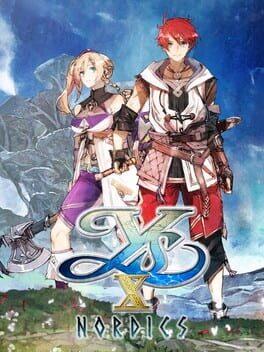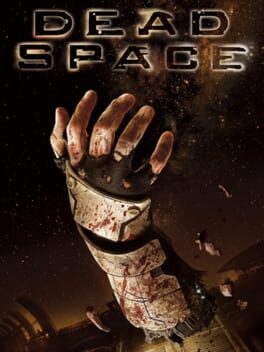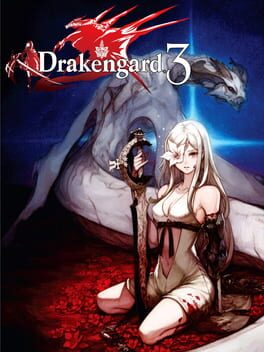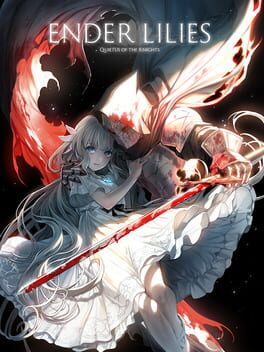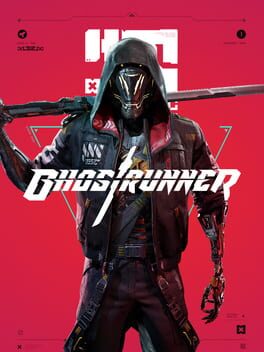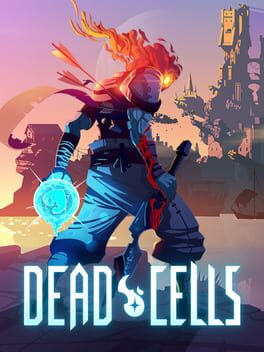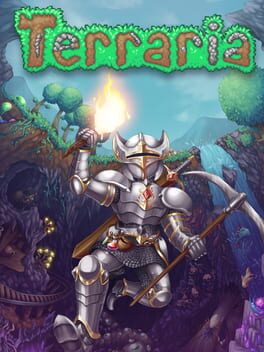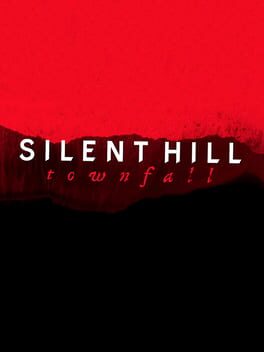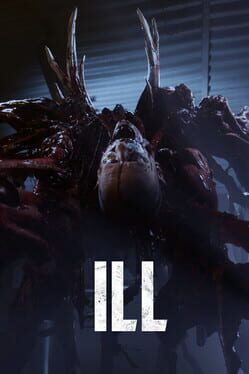Kyl790
24 reviews liked by Kyl790
Ys X: Nordics
2023
tl;dr: If you've played and enjoyed a Ys game, you'll probably like this one too. If you haven't, try out VIII first. If you liked VIII but disliked IX, this one is much closer to VIII than it is to IX.
Playtime: 70h 5m, did everything.
Plot: Fine, better than IX. Not a fan of the pacing, felt like it took a while for me to get into it but I enjoyed how everything panned out. Not the biggest fan of the main crew but I like Karja and most of the side characters.
Gameplay: X contains the debut of the "Cross Action" system, a change from the Seven system that was used in 7/8/9. Rather than controlling a full party, it's just Adol and Karja. You can either control them individually or switch into the Combined mode which changes your moveset and lets you guard most moves. Weaving between solo and combination modes was fun and I'm looking forward to seeing how they develop it in the next game.
They also added a system like orbments from the Kiseki series but it doesn't really affect too much, would like to see them develop this more.
Music: Didn't love any of the battle themes but a lot of the zone and town themes are great. Doesn't have the overall quality of VIII and previous OSTs but it's better than IX for sure.
Exploration: I'm biased towards islands and coastal environments so I was a fan (anything is better than Balduq). Some of the zones are a too large and feel emptier as a result. Also, buried treasures are AWFUL. John Falcom, if you're reading this, never do that again. Controlling the boat during ocean exploration is painful, which leads to...
Naval Battles and Maneuvering: The worst part of the game. Controlling the boat is very clunky and simply not enjoyable. Thankfully I was able to S-rank all of them first try because having to redo any of them would be MISERABLE.
Overall, while it took a bit longer than usual to get into it, once the game hit its stride I had a pretty good time and am looking forward to XI.
Playtime: 70h 5m, did everything.
Plot: Fine, better than IX. Not a fan of the pacing, felt like it took a while for me to get into it but I enjoyed how everything panned out. Not the biggest fan of the main crew but I like Karja and most of the side characters.
Gameplay: X contains the debut of the "Cross Action" system, a change from the Seven system that was used in 7/8/9. Rather than controlling a full party, it's just Adol and Karja. You can either control them individually or switch into the Combined mode which changes your moveset and lets you guard most moves. Weaving between solo and combination modes was fun and I'm looking forward to seeing how they develop it in the next game.
They also added a system like orbments from the Kiseki series but it doesn't really affect too much, would like to see them develop this more.
Music: Didn't love any of the battle themes but a lot of the zone and town themes are great. Doesn't have the overall quality of VIII and previous OSTs but it's better than IX for sure.
Exploration: I'm biased towards islands and coastal environments so I was a fan (anything is better than Balduq). Some of the zones are a too large and feel emptier as a result. Also, buried treasures are AWFUL. John Falcom, if you're reading this, never do that again. Controlling the boat during ocean exploration is painful, which leads to...
Naval Battles and Maneuvering: The worst part of the game. Controlling the boat is very clunky and simply not enjoyable. Thankfully I was able to S-rank all of them first try because having to redo any of them would be MISERABLE.
Overall, while it took a bit longer than usual to get into it, once the game hit its stride I had a pretty good time and am looking forward to XI.
Dead Space
2008
the jointed, scythe-like arms on the necromorphs stick out for multiple reasons, but there's a subtle trick the designers pull with it (intentionally or unintentionally) that fucked me up so many times playing through this game. with the camera in the traditional claustrophobic over-the-shoulder view, there's virtually no way to view what's behind the player without carefully swinging it around. when one of those necromorphs silently creeps up on you and dangles their arms right over isaac's head, letting them peek right into the frame... it elicits such a snap reaction from me anytime it happens. in an otherwise quiet situation there's a hope that hauling ass without looking back will put enough distance between you and them to turn around safely, but god forbid it happens when you're already firing off shots at enemies ahead of you. that heart-sinking feeling of realizing the crowd you had carefully herded together isn't the extent of the danger in the room and that you're actually completely flanked turns tense strategy into desperate flailing. rarely does isaac lack for available weapons or resources, but encounters like these reinforce that it's a constant struggle for survival regardless.
in many ways this is the bastard heir to the resident evil 4 throne, and it even attempts to be a "regular" survival horror game to boot. besides the perverse way bodies are reanimated and mutated into angular beasts, intestines dangling and writhing outside of the torso, there's some gesturing towards explorable environments and puzzle-solving. each chapter is located in a different wing of the ship, with each of these areas arranged in a spoked hub design with linear branches leading to key items towards some sort of general puzzle located in the center. no real brainteasers here -- most of it's either just picking up key items or manipulating interactables with the kinesis ability -- but I found the scenario escalation here surprisingly appealing. driven on by various talking heads over the diegetically-integrated hologram comms, the pace feels brisk, and the game rarely stumbles in regards to directing the player to their next location. it's certainly not organic, but this is the re4 model, not re1.
the first five chapters or so were novel but felt overly dependent on fetch objectives, and it was in the second half of the game where it seemed like the designers stretched their legs a bit. setpiece loaded areas such as the USS valor and its power outages, fiery engine interiors, and wide-open bridges ripe for combat arenas elevate what otherwise would have been dry encounters into a strained flow of ratcheting tension from room to room. much of this is helped by the disorienting zero gravity sections that open up some minor platforming and release the shackles on isaac's otherwise-lethargic movement. at their best they hinder typical combat and make ordinary enemies more threatening through spatially-foreign positioning that plays with one's typical mental layout of encounter locality; at worst they are perfunctory beyond the clunky fun of watching isaac bounce from wall to wall. the sections exploring the vacuum of space are less interesting... any attempt to constrain the player by tethering them to a countdown (in this case an oxygen meter) risks them struggling to execute within the limit or becoming anxious at the impending doom. the designers punt on these issues by introducing heavy guardrails into these sections along with frequent oxygen refills, which take what should be the threat of venturing beyond the limits of human existence into the void of space and reduce them to a dog leash.
these are just the bits of downtime between the combat, however, and each encounter feels like a proper challenge to optimize and strategize within. shooters generally use the general projectile model of impact: momentum (and thus kinetic energy) demonstrated by the jitter of firing of a clip and the repeated thud of the bullet meeting its mark. dead space sets itself apart by dispensing with this and introducing the slice. much like how simply unloading rounds into a zombie's torso is inefficient in resident evil, dead space heavily discourages aiming for the easiest targets in favor of severing appendages. the hooked arms and stubby legs of necromorphs come in a variety of configurations from wildly dangling to tucked in to swaying alongside a jaunty waddle, and learning how to properly dissect each orientation is key. this makes lining up shots less focused on quick reactions and more on careful placement, and no weapon handles this better than the handgun equivalent: the plasma cutter. it evicersates even late-game enemies with ease so long as the player properly places its linear crosshairs perpendicular to the extremity, which requires instinctual understanding of both its vertical and horizontal firing modes. the other weapons are equally as impressive: the line gun and the contact beam both hail from applications in excavations and provide extremely powerful severing power with a wide horizontal blast for the former and a focused vertical shot for the second. the ripper in theory was one of my favorites as well with its remote controlled sawblade that could easily trim opponents down to size, though its stopping/staggering potential is low and prevented it from keeping a permanent spot in my inventory. indeed, most of these extra weapons have excellent specific uses but lack that high reliability and versatility of the plasma cutter. if I did a second playthrough right now, I may as well just do a handgun-only run.
the typical crane-arm necromorph comprises most of the alien cast, but it's worth mentioning that many other enemies take advantage of your special abilities as well. where I fall regarding whether this is a good or bad thing is mixed... after all, the bread-and-butter of the game is severing, and when the game attempts to introduce additional factors it's hit or miss. take for example enemies that split open into reams of parasitic spawn upon death, specifically when the arms have not been severed. the little tykes are finicky to dispatch with anything other than the flamethrower, and when not getting picked off one by one they have a bad tendency to leap upon you and force you to perform a mashing QTE to remove them, something the game leans on a bit too heavily even with regular enemies. anything with projectiles is also sketchy, as isaac struggles to maneuver around them thanks to the camera angle; the damage is less the issue compared to the obnoxious hitstun. even then, much of the annoyance is combat stems from ignoring the severing gimmick, and I more or less understand the designer's intent in slapping the player's wrist for attempt to play guns ablaze, but no one is a perfect aim (esp on ps3 at ~20 fps). I could do without lethargic segments of carefully sniping single-tendril projectile minions strewn across the ground when I could be thrown into the actual fear inherent in the quickly-moving enemies of regular combat. plenty of the necromorph variants don't have the issues regardless and enrich the design no matter the apperance whether it's the occasional invincible stalker miniboss or the shuddering valor crewmembers that move at lightning speeds.
which is to say, the game is frequently great and occasionally fantastic whether wading through a sea of aliens or being a handyman around the decks of the ishimura. for perspective, I believe this game took me around nine hours, and at the same time by re4 rules it bats a lower average in terms of overall scenario/encounter creativity, regardless of the praise above. the bar is high! I'm putting it in this context because the other, possibly more intended context of tense space thriller is less appealing to me. bioshock-esque audio logs, frequent yammering from people never properly introduced, an extremely on-the-nose analogue to scientology, pointless intrigue that never affects your actual tasks around the station... how many times must I watch an NPC soliloquize from behind plexiglass before executing something supposedly shocking before I get the point. it was de rigeur to do shit like this tho in the 360 era, and the absence of traditional cutscenes makes it easier to swallow for sure. it's just odd none of the staff ever realized how goofy it is for isaac to be running around digging through receptacles for spare items while someone is solemnly shooting a random crew member. in 2022 you're not here for the story though, you're here because you want an early HD third-person shooter that doesn't lean on a cover system as a crutch. in that respect dead space is a lot more clever than it originally lets on.
in many ways this is the bastard heir to the resident evil 4 throne, and it even attempts to be a "regular" survival horror game to boot. besides the perverse way bodies are reanimated and mutated into angular beasts, intestines dangling and writhing outside of the torso, there's some gesturing towards explorable environments and puzzle-solving. each chapter is located in a different wing of the ship, with each of these areas arranged in a spoked hub design with linear branches leading to key items towards some sort of general puzzle located in the center. no real brainteasers here -- most of it's either just picking up key items or manipulating interactables with the kinesis ability -- but I found the scenario escalation here surprisingly appealing. driven on by various talking heads over the diegetically-integrated hologram comms, the pace feels brisk, and the game rarely stumbles in regards to directing the player to their next location. it's certainly not organic, but this is the re4 model, not re1.
the first five chapters or so were novel but felt overly dependent on fetch objectives, and it was in the second half of the game where it seemed like the designers stretched their legs a bit. setpiece loaded areas such as the USS valor and its power outages, fiery engine interiors, and wide-open bridges ripe for combat arenas elevate what otherwise would have been dry encounters into a strained flow of ratcheting tension from room to room. much of this is helped by the disorienting zero gravity sections that open up some minor platforming and release the shackles on isaac's otherwise-lethargic movement. at their best they hinder typical combat and make ordinary enemies more threatening through spatially-foreign positioning that plays with one's typical mental layout of encounter locality; at worst they are perfunctory beyond the clunky fun of watching isaac bounce from wall to wall. the sections exploring the vacuum of space are less interesting... any attempt to constrain the player by tethering them to a countdown (in this case an oxygen meter) risks them struggling to execute within the limit or becoming anxious at the impending doom. the designers punt on these issues by introducing heavy guardrails into these sections along with frequent oxygen refills, which take what should be the threat of venturing beyond the limits of human existence into the void of space and reduce them to a dog leash.
these are just the bits of downtime between the combat, however, and each encounter feels like a proper challenge to optimize and strategize within. shooters generally use the general projectile model of impact: momentum (and thus kinetic energy) demonstrated by the jitter of firing of a clip and the repeated thud of the bullet meeting its mark. dead space sets itself apart by dispensing with this and introducing the slice. much like how simply unloading rounds into a zombie's torso is inefficient in resident evil, dead space heavily discourages aiming for the easiest targets in favor of severing appendages. the hooked arms and stubby legs of necromorphs come in a variety of configurations from wildly dangling to tucked in to swaying alongside a jaunty waddle, and learning how to properly dissect each orientation is key. this makes lining up shots less focused on quick reactions and more on careful placement, and no weapon handles this better than the handgun equivalent: the plasma cutter. it evicersates even late-game enemies with ease so long as the player properly places its linear crosshairs perpendicular to the extremity, which requires instinctual understanding of both its vertical and horizontal firing modes. the other weapons are equally as impressive: the line gun and the contact beam both hail from applications in excavations and provide extremely powerful severing power with a wide horizontal blast for the former and a focused vertical shot for the second. the ripper in theory was one of my favorites as well with its remote controlled sawblade that could easily trim opponents down to size, though its stopping/staggering potential is low and prevented it from keeping a permanent spot in my inventory. indeed, most of these extra weapons have excellent specific uses but lack that high reliability and versatility of the plasma cutter. if I did a second playthrough right now, I may as well just do a handgun-only run.
the typical crane-arm necromorph comprises most of the alien cast, but it's worth mentioning that many other enemies take advantage of your special abilities as well. where I fall regarding whether this is a good or bad thing is mixed... after all, the bread-and-butter of the game is severing, and when the game attempts to introduce additional factors it's hit or miss. take for example enemies that split open into reams of parasitic spawn upon death, specifically when the arms have not been severed. the little tykes are finicky to dispatch with anything other than the flamethrower, and when not getting picked off one by one they have a bad tendency to leap upon you and force you to perform a mashing QTE to remove them, something the game leans on a bit too heavily even with regular enemies. anything with projectiles is also sketchy, as isaac struggles to maneuver around them thanks to the camera angle; the damage is less the issue compared to the obnoxious hitstun. even then, much of the annoyance is combat stems from ignoring the severing gimmick, and I more or less understand the designer's intent in slapping the player's wrist for attempt to play guns ablaze, but no one is a perfect aim (esp on ps3 at ~20 fps). I could do without lethargic segments of carefully sniping single-tendril projectile minions strewn across the ground when I could be thrown into the actual fear inherent in the quickly-moving enemies of regular combat. plenty of the necromorph variants don't have the issues regardless and enrich the design no matter the apperance whether it's the occasional invincible stalker miniboss or the shuddering valor crewmembers that move at lightning speeds.
which is to say, the game is frequently great and occasionally fantastic whether wading through a sea of aliens or being a handyman around the decks of the ishimura. for perspective, I believe this game took me around nine hours, and at the same time by re4 rules it bats a lower average in terms of overall scenario/encounter creativity, regardless of the praise above. the bar is high! I'm putting it in this context because the other, possibly more intended context of tense space thriller is less appealing to me. bioshock-esque audio logs, frequent yammering from people never properly introduced, an extremely on-the-nose analogue to scientology, pointless intrigue that never affects your actual tasks around the station... how many times must I watch an NPC soliloquize from behind plexiglass before executing something supposedly shocking before I get the point. it was de rigeur to do shit like this tho in the 360 era, and the absence of traditional cutscenes makes it easier to swallow for sure. it's just odd none of the staff ever realized how goofy it is for isaac to be running around digging through receptacles for spare items while someone is solemnly shooting a random crew member. in 2022 you're not here for the story though, you're here because you want an early HD third-person shooter that doesn't lean on a cover system as a crutch. in that respect dead space is a lot more clever than it originally lets on.
Drakengard 3
2013
If it weren’t for the dreadful performance issues and the prior knowledge of who was at the helm of this project, I would have had a hard time differentiating Drakengard 3 from the countless mid budget Japanese games that populated the 7th gen. It is kinda fitting, and in some ways admirable, that a game coming at the very tail end of the ps3 lifespan, a console notorious for lowering the bar for acceptable framerate and optimization, would achieve the worst performance that ever graced the cell processor. But take away the obvious elephant in the room, and Drakengard 3 is actually a pretty serviceable and enjoyable hack n’ slash that hardly inherits the DNA from its predecessors.
Drakengard 3 carries itself with a whiff of resignation from the outset, an apathetic conformity to the whims of an industry that was slogging on forward to its demise, long after Nier’s final gasp for air. The world didn’t really care for what Drakengard 1 had to say, and while I don’t think Yoko Taro ever expected it to listen, Drakengard 3 is his most indifferent and defeatist work, with a constant self awareness that points out the absurdism of videogames, without ever trying to engage with it for most of the runtime, and while I am certain that the terrible performance issues are just a symptom of rushed development and a nonexistent budget, the 10 FPS drops do lend a certain intentional hilarity to the game at the player’s expense.
Despite not reveling in the misery porn of Drakengard 1, it somehow manages to be an even uglier game, in all senses of the word. The cast gleefully express from the get-go their propensity for violence and murder for comedic effect, the character designs are bloated with generic anime-isms and garish colors that clash with the medieval tone of the environments, the combat is now sufferable and standard musou fare that no longer provides the unique boredom present in Drakengard 1, filling the screen with shallow stylized blood splatter and DMC combos, and the game manages to be unpleasant in wholly new ways thanks to a plethora of explicit and depraved sexual innuendos that decorate most of the script. And yet Yoko Taro manages to find some life in this corpse of a videogame.
In contrast to Drakengard 1, the more you play, the more the game is willing to open a breach and extend its hand to you, regardless of how restrictive its polygon walls can be, and the jaded psychotic nature of its characters manage to somehow open up to reveal a sad, broken world pleading for death and change, of any kind. Even if the only language these characters can speak through are murder and sexual desire, they have the power to change the status quo, no matter how childish and naive that sentiment might be or how badly the cards they have been dealt are. And once again, Drakengard asks that you drop your weapons and everything you learned thus far, devote yourself and your time to its insanity, and struggle through one of the most infuriating and mesmerizing final bosses ever conceived. Bashing your head into a wall to the point of despair and defeat might not seem like the optimal way to communicate such messages, but like one character says after sacrificing itself in a bout of inspiration: “This was more human, wasn’t it?”
Drakengard 3 to me is Yoko Taro’s most impenetrable work, and a big part of it is due to the baffling decision to spread a lot of backstory and lore that drastically changes interpretation of the source material through a bunch of paid DLC, novellas and mangas, context that should have definitely been present in the game itself and would have made this a much more accessible and comprehensible entry in his Drakengard oeuvre. A lot of the ideas from Automata seem to have been conceptualized here first, such as being trapped in an endless death and rebirth cycle of bloodshed, a near impossible final boss that has you fighting against the game itself, or a meta-textual force interfering with the outcome of the story, and it functions like an inevitable bridge between Nier’s sorrowful epipath and Nier Automata’s existential rebellion. Drakengard 3 is the perfect 7th gen game, both a symptom of and a response to the dark age of japanese videogames. It just embodies that ethos a bit too much for its own good sometimes.
And yeah, this review was just an excuse to say I beat the Final Song. I did it. It took me 5+ hours to do it, but I fucking did it, and I did it without syncing the game to no video guide either. Hitting that final invisible note by pure intuition after going through hell is the most beautiful thing ever in videogames, and I’m so glad I never have to go through it again.
Drakengard 3 carries itself with a whiff of resignation from the outset, an apathetic conformity to the whims of an industry that was slogging on forward to its demise, long after Nier’s final gasp for air. The world didn’t really care for what Drakengard 1 had to say, and while I don’t think Yoko Taro ever expected it to listen, Drakengard 3 is his most indifferent and defeatist work, with a constant self awareness that points out the absurdism of videogames, without ever trying to engage with it for most of the runtime, and while I am certain that the terrible performance issues are just a symptom of rushed development and a nonexistent budget, the 10 FPS drops do lend a certain intentional hilarity to the game at the player’s expense.
Despite not reveling in the misery porn of Drakengard 1, it somehow manages to be an even uglier game, in all senses of the word. The cast gleefully express from the get-go their propensity for violence and murder for comedic effect, the character designs are bloated with generic anime-isms and garish colors that clash with the medieval tone of the environments, the combat is now sufferable and standard musou fare that no longer provides the unique boredom present in Drakengard 1, filling the screen with shallow stylized blood splatter and DMC combos, and the game manages to be unpleasant in wholly new ways thanks to a plethora of explicit and depraved sexual innuendos that decorate most of the script. And yet Yoko Taro manages to find some life in this corpse of a videogame.
In contrast to Drakengard 1, the more you play, the more the game is willing to open a breach and extend its hand to you, regardless of how restrictive its polygon walls can be, and the jaded psychotic nature of its characters manage to somehow open up to reveal a sad, broken world pleading for death and change, of any kind. Even if the only language these characters can speak through are murder and sexual desire, they have the power to change the status quo, no matter how childish and naive that sentiment might be or how badly the cards they have been dealt are. And once again, Drakengard asks that you drop your weapons and everything you learned thus far, devote yourself and your time to its insanity, and struggle through one of the most infuriating and mesmerizing final bosses ever conceived. Bashing your head into a wall to the point of despair and defeat might not seem like the optimal way to communicate such messages, but like one character says after sacrificing itself in a bout of inspiration: “This was more human, wasn’t it?”
Drakengard 3 to me is Yoko Taro’s most impenetrable work, and a big part of it is due to the baffling decision to spread a lot of backstory and lore that drastically changes interpretation of the source material through a bunch of paid DLC, novellas and mangas, context that should have definitely been present in the game itself and would have made this a much more accessible and comprehensible entry in his Drakengard oeuvre. A lot of the ideas from Automata seem to have been conceptualized here first, such as being trapped in an endless death and rebirth cycle of bloodshed, a near impossible final boss that has you fighting against the game itself, or a meta-textual force interfering with the outcome of the story, and it functions like an inevitable bridge between Nier’s sorrowful epipath and Nier Automata’s existential rebellion. Drakengard 3 is the perfect 7th gen game, both a symptom of and a response to the dark age of japanese videogames. It just embodies that ethos a bit too much for its own good sometimes.
And yeah, this review was just an excuse to say I beat the Final Song. I did it. It took me 5+ hours to do it, but I fucking did it, and I did it without syncing the game to no video guide either. Hitting that final invisible note by pure intuition after going through hell is the most beautiful thing ever in videogames, and I’m so glad I never have to go through it again.
Ender Lilies: Quietus of the Knights is easily right up there with Hollow Knight and Bloodstained: Ritual of the Night as one of the best modern metroidvanias that I've personally played. It's about half the length of those games only clocking in at 21 hours for my 100% run, but even with its relatively short completion time it still hits the mark on everything that makes a metroidvania enjoyable.
Starting with the premise of the story, you play as Lily, the last and youngest White Priestess, your mission is to purify the kingdom of Land's End from the Blight, a rain which corrupts and drives anything it touches (aside from Lily herself) to madness while simultaneously granting immortality. The previous Priestess bound the spirit of her faithful knight companion to Lily for protection seeing as how Lily herself is young and defenseless. The Umbral Knight is your faithful companion who follows Lily on her journey and will occasional speak exposition as you reach new areas. The bulk of the narrative is told in a Dark Souls-like manner by giving the player bits and pieces of lore at a time in the form of diary entries you have to find and read and memories in the form of cut-scenes you witness from felling boss enemies. At the end of the day it's not a very complex plot, but there are a few twists and revelations and some moments that will definitely pull at your heartstrings and I found it compelling all the way through, it gave me a very dark fantasy fairytale vibe which I liked a lot.
Aside from Lily and the Umbral Knight there are many characters you'll meet along the way in the form of main story bosses and mini bosses, to avoid spoilers I won't name any specifics, but in true Souls-like fashion they all have their own tragic histories and stories, the game can be very dark and sad at times, but I feel like that is part of what makes it so memorable and even if you never talk to any of these characters you really feel for them with how well their backstories are written, especially if you take the time to read all the lore entries.
Next I want to mention the OST because it's just simply incredible. It was composed by the Japanese art pop/classical crossover group Mili, I've been a big fan of Mili for a couple years now so as soon as I heard the Cliffside Hamlet theme and heard the ethereal whisper humming of Cassie Wei I recognized it was Mili and knew immediately this OST would be a classic. There's tons of variety with plenty of mystical fairytale like medieval folk music to fit the fairytale vibe of the game, but there's also suspenseful and unsettling atmospheric songs and orchestral bombastic themes as well, I also have to mention that I love how the music slowly builds up during boss fights and as the boss loses more and more health it swells with more bombast. The ending/credits theme is also just gorgeous.
Gameplay as with every metroidvania is evenly divided into two major aspects, combat and exploration.
1) The combat. It starts out basic as you only have the Umbral Knight at your behest in the beginning. Being a frail little girl Lily herself doesn't fight, but summons spirits to attack for her and the game has a great sense of progression as you truly feel Lilly getting stronger the longer you play the game as you level up and collect new spirits to help fight for you. Spirits act as skill attacks and once you have enough you can bind 6 total, 3 to your primary set and 3 to your secondary set. These each correspond to the buttons square, triangle and circle, you can switch between sets with R1, normal spirits have cooldowns and limited uses while boss spirits don't, so it's good to swap between a set of each to chain together combos and do great damage. This is a Souls-like aside from a metroidvania so of course you have a dodge as well and I really want to mention the nice detail of how the animation for Lily's dodge is her throwing her entire body out of the way while landing on the ground, it really shows how weak and defenseless she is and another show of progression is eventually you'll unlock a dash and that changes Lily's default dodge animation to a graceful slide across the ground. Overall there's tons of variety in the combat and many cool spirit attacks to try out and utilize for different types of play-styles and builds.
2) The exploration. The map in Ender Lilies is a very decent size and packed to the brim with secret walls, hidden pathways and items galore to find. These will come in the shape of lore entries, Relics which you equip to increase various stats, Amulet fragments and gems which permanently increase your health and Blight which is used to enhance your spirits. A big portion of these items and secrets you can't reach at first, but as you progress further into the game you'll slowly unlock your metroidvania staple power-ups. Double jump, wall climb, air dash, breathing underwater etc. You name it, it's there, can never go wrong with the classics and these power-ups will make those backtracking trips just as fresh as the first run through the area. Which brings me to my next point...
The level design. Every time I got a new power-up I couldn't wait to backtrack through the map to find new secrets I couldn't reach prior and that's mostly due to the fantastic level design (Well and the fact that there's ample bonfire/fast travel locations to move between) level design is vibrantly colorful with tons of scenic variety, you have everything from a ruined castle to a witch's hamlet that's been flooded and a poisonous fog filled abyss. There were a couple areas that had some poor enemy placement, but they're few and far between and easy to look past, aside from that exploring each level numerous times was a joy.
The art direction and the actual background art itself is simply beautiful, reminds me of Vanillaware's style, especially Odin Sphere and it definitely helps accentuate the whole fairytale vibe the game has going for it. The animations are all high quality as well, everything from simple movements to the attacks look charming and feel very smooth and fluid.
Almost all the bosses were incredibly fun to fight, each boss has multiple phases as their health bar decreases and that changes up their moveset just when you think you've memorized it. The difficulty was perfectly adjusted to be just challenging enough to take a few tries to beat, but not so hard that the difficulty felt artificial, the only exceptions to this were a couple late game bosses which didn't rely on the boss themselves being challenging and just threw infinite mobs of enemies at you while fighting the boss, that felt pretty cheap to me, but once again I love everything else so much that it's easy to look past this.
All in all Ender Lilies: Quietus of the Knights is a masterfully crafted modern classic in the metroidvania genre, managing to tell a compelling narrative with plenty of interesting world-building and well written characters, feature a combat system that is enjoyable and has good depth to it, bosses which are both challenging and fun to fight and a world that is always a joy to explore with an OST that is truly a magical composition which perfectly captures the atmosphere of the beautiful art aesthetics. If you're a fan of games like Hollow Knight, Salt and Sanctuary or Castlevania: Symphony of the Night you certainly don't want to miss out on this gem of a game.
Starting with the premise of the story, you play as Lily, the last and youngest White Priestess, your mission is to purify the kingdom of Land's End from the Blight, a rain which corrupts and drives anything it touches (aside from Lily herself) to madness while simultaneously granting immortality. The previous Priestess bound the spirit of her faithful knight companion to Lily for protection seeing as how Lily herself is young and defenseless. The Umbral Knight is your faithful companion who follows Lily on her journey and will occasional speak exposition as you reach new areas. The bulk of the narrative is told in a Dark Souls-like manner by giving the player bits and pieces of lore at a time in the form of diary entries you have to find and read and memories in the form of cut-scenes you witness from felling boss enemies. At the end of the day it's not a very complex plot, but there are a few twists and revelations and some moments that will definitely pull at your heartstrings and I found it compelling all the way through, it gave me a very dark fantasy fairytale vibe which I liked a lot.
Aside from Lily and the Umbral Knight there are many characters you'll meet along the way in the form of main story bosses and mini bosses, to avoid spoilers I won't name any specifics, but in true Souls-like fashion they all have their own tragic histories and stories, the game can be very dark and sad at times, but I feel like that is part of what makes it so memorable and even if you never talk to any of these characters you really feel for them with how well their backstories are written, especially if you take the time to read all the lore entries.
Next I want to mention the OST because it's just simply incredible. It was composed by the Japanese art pop/classical crossover group Mili, I've been a big fan of Mili for a couple years now so as soon as I heard the Cliffside Hamlet theme and heard the ethereal whisper humming of Cassie Wei I recognized it was Mili and knew immediately this OST would be a classic. There's tons of variety with plenty of mystical fairytale like medieval folk music to fit the fairytale vibe of the game, but there's also suspenseful and unsettling atmospheric songs and orchestral bombastic themes as well, I also have to mention that I love how the music slowly builds up during boss fights and as the boss loses more and more health it swells with more bombast. The ending/credits theme is also just gorgeous.
Gameplay as with every metroidvania is evenly divided into two major aspects, combat and exploration.
1) The combat. It starts out basic as you only have the Umbral Knight at your behest in the beginning. Being a frail little girl Lily herself doesn't fight, but summons spirits to attack for her and the game has a great sense of progression as you truly feel Lilly getting stronger the longer you play the game as you level up and collect new spirits to help fight for you. Spirits act as skill attacks and once you have enough you can bind 6 total, 3 to your primary set and 3 to your secondary set. These each correspond to the buttons square, triangle and circle, you can switch between sets with R1, normal spirits have cooldowns and limited uses while boss spirits don't, so it's good to swap between a set of each to chain together combos and do great damage. This is a Souls-like aside from a metroidvania so of course you have a dodge as well and I really want to mention the nice detail of how the animation for Lily's dodge is her throwing her entire body out of the way while landing on the ground, it really shows how weak and defenseless she is and another show of progression is eventually you'll unlock a dash and that changes Lily's default dodge animation to a graceful slide across the ground. Overall there's tons of variety in the combat and many cool spirit attacks to try out and utilize for different types of play-styles and builds.
2) The exploration. The map in Ender Lilies is a very decent size and packed to the brim with secret walls, hidden pathways and items galore to find. These will come in the shape of lore entries, Relics which you equip to increase various stats, Amulet fragments and gems which permanently increase your health and Blight which is used to enhance your spirits. A big portion of these items and secrets you can't reach at first, but as you progress further into the game you'll slowly unlock your metroidvania staple power-ups. Double jump, wall climb, air dash, breathing underwater etc. You name it, it's there, can never go wrong with the classics and these power-ups will make those backtracking trips just as fresh as the first run through the area. Which brings me to my next point...
The level design. Every time I got a new power-up I couldn't wait to backtrack through the map to find new secrets I couldn't reach prior and that's mostly due to the fantastic level design (Well and the fact that there's ample bonfire/fast travel locations to move between) level design is vibrantly colorful with tons of scenic variety, you have everything from a ruined castle to a witch's hamlet that's been flooded and a poisonous fog filled abyss. There were a couple areas that had some poor enemy placement, but they're few and far between and easy to look past, aside from that exploring each level numerous times was a joy.
The art direction and the actual background art itself is simply beautiful, reminds me of Vanillaware's style, especially Odin Sphere and it definitely helps accentuate the whole fairytale vibe the game has going for it. The animations are all high quality as well, everything from simple movements to the attacks look charming and feel very smooth and fluid.
Almost all the bosses were incredibly fun to fight, each boss has multiple phases as their health bar decreases and that changes up their moveset just when you think you've memorized it. The difficulty was perfectly adjusted to be just challenging enough to take a few tries to beat, but not so hard that the difficulty felt artificial, the only exceptions to this were a couple late game bosses which didn't rely on the boss themselves being challenging and just threw infinite mobs of enemies at you while fighting the boss, that felt pretty cheap to me, but once again I love everything else so much that it's easy to look past this.
All in all Ender Lilies: Quietus of the Knights is a masterfully crafted modern classic in the metroidvania genre, managing to tell a compelling narrative with plenty of interesting world-building and well written characters, feature a combat system that is enjoyable and has good depth to it, bosses which are both challenging and fun to fight and a world that is always a joy to explore with an OST that is truly a magical composition which perfectly captures the atmosphere of the beautiful art aesthetics. If you're a fan of games like Hollow Knight, Salt and Sanctuary or Castlevania: Symphony of the Night you certainly don't want to miss out on this gem of a game.
Ghostrunner
2020
Did not enjoy my - admittedly brief - time with this. I can see what the gimmick is, but I didn't enjoy actually playing it, especially when you die in literally one hit and checkpoints are at the beginning of every combat encounter, no matter how long that encounter/section is. Probably would be easier with a mouse and keyboard, but I'm a controller man, even when I play PC games.

